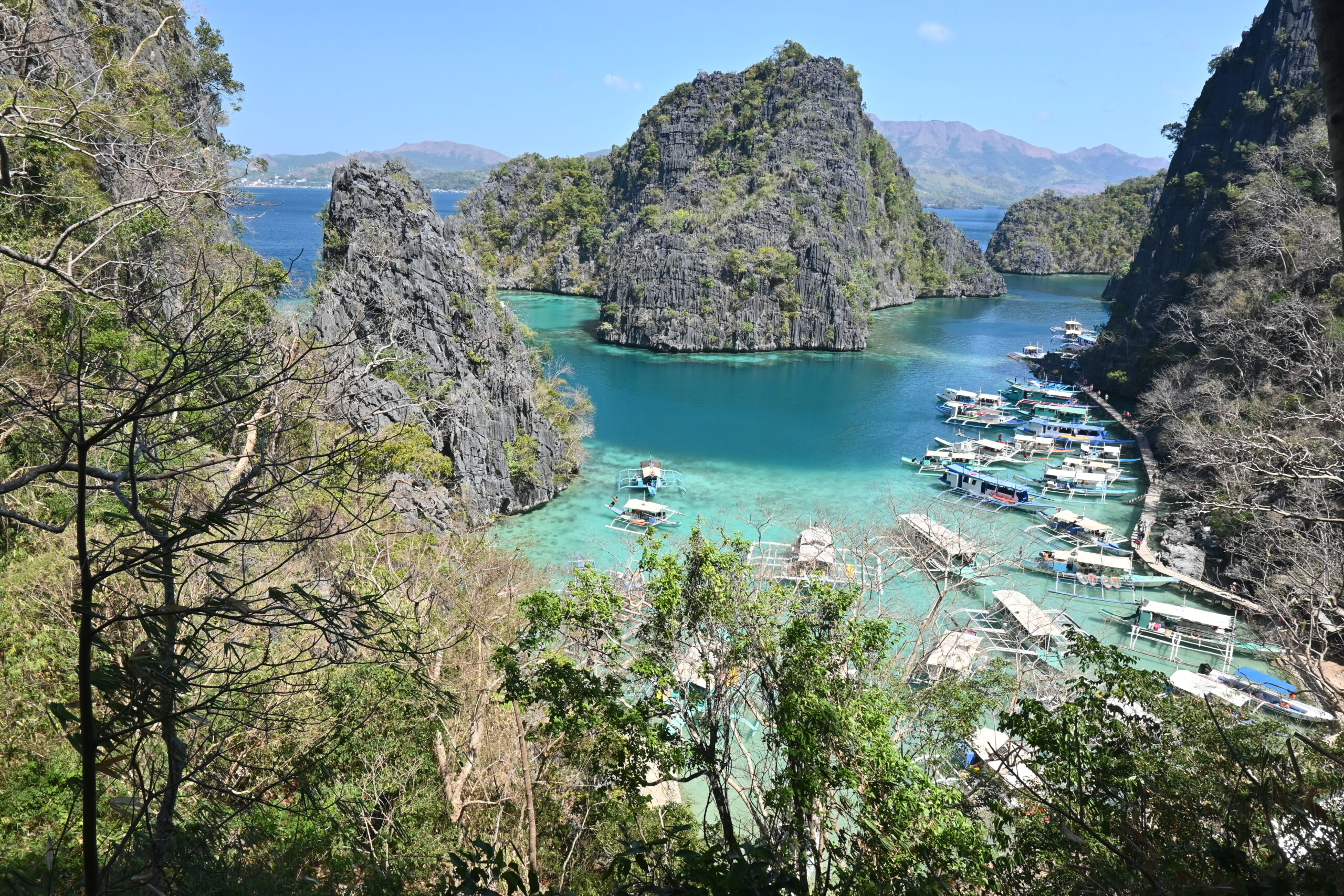THE MOODS OF THE GIRAFFE
Here are five reasons not to visit Asia on a scooter.
 We are François and Benjamin, Canadian and French giraffe hairstylists and travel enthusiasts. On this blog, discover our travels, tips, moods, and everything you need to become a giraffe hairstylist and embark on travelling the world. An honest blog with photos guaranteed 100% unfiltered and untouched. |
We have all been tempted by the idea of jumping on a two-wheeler and experiencing the adventure at full throttle in dreamy landscapes. But before exploring Southeast Asia on a scooter, there are some significant challenges to consider.
Every time we planned a trip to a Southeast Asian country, we read countless blogs all repeating the same thing: there’s nothing better than exploring the country on a scooter. Visiting the ancient royal capitals of Burma, reaching the top of Mount Bromo, touring Bohol Island in the Philippines… According to the internet, it would be foolish not to rent a scooter. In fact, it’s only on a scooter that one can fully enjoy these incredible places.
Certainly, there’s nothing more exhilarating than setting off freely on the roads of an unfamiliar country. We are the first to love road trips. But between Route 66 and the roads of the Indonesian island of Flores, one must adapt to the reality of the terrain. Of course, the underlying economic argument is real: renting a scooter is much cheaper than booking a taxi or a guide for the day. And let’s be honest, it’s cooler!
But beware, the risks are real, and every year there are serious accidents and deaths among careless tourists riding two-wheelers on Southeast Asian roads. In 2023, authorities in Bali even decided to prohibit the rental of mopeds by foreigners due to dangerous behaviors (in 2020, over 400 people were victims of road accidents on this small Indonesian island!).
Here are five reasons why renting a scooter might not be the best idea in this fascinating region of the world.
1. Roads in Southeast Asia can be dangerous. They are not always well-maintained, especially in rural areas. With potholes, uneven cobblestones, and unpaved stretches, navigating with a scooter can become a real challenge. Bumps and jolts can make your journey much less comfortable than expected… and much more dangerous.
2. Traffic can be a real nightmare, with drivers who don’t always seem to respect the rules. Traffic lights? Sometimes optional. No entry signs? Often ignored. Prepare for a bewildering dance of scooters, cars, pedestrians, and honking horns, which can be confusing, even dangerous. And don’t think only locals are involved: tourists also often exhibit reckless behavior. After all, they’re on vacation, far from home, so why bother with traffic rules? That would spoil the holiday, right?
3. It can be challenging to obtain vehicle papers and a helmet, further increasing the risks of serious accidents. Renting a scooter can be a complicated task, especially if you don’t speak the country’s language. Getting the vehicle papers and a quality helmet can be a real headache. It’s essential to have all the necessary documents to avoid legal issues.
4. In case of a non-serious accident, your day will be ruined. Picture yourself negotiating with a local mechanic to fix an issue with your scooter. If you don’t speak the local language, it can become a test of patience and creativity. Mechanical problems may arise, disrupting your plans for the rest of the day. Freedom, yes, but spending your vacation struggling with mechanical issues or at the police station is definitely less glamorous.
5. While traveling on a two-wheeler provides a sense of freedom, it comes at the cost of losing interactions with locals and economic impact on residents. Going through a guide is also a social experience: you’ll have the opportunity to share a moment with your guide, learn more about what you’re visiting, and discuss their daily life. Of course, hiring a driver or guide may be more expensive, but beyond comfort and a reduced risk of accidents, you also gain in encounters and exchanges. Especially if you decide to explore lesser-known sites, where you’ll find less information in guides or on the internet.
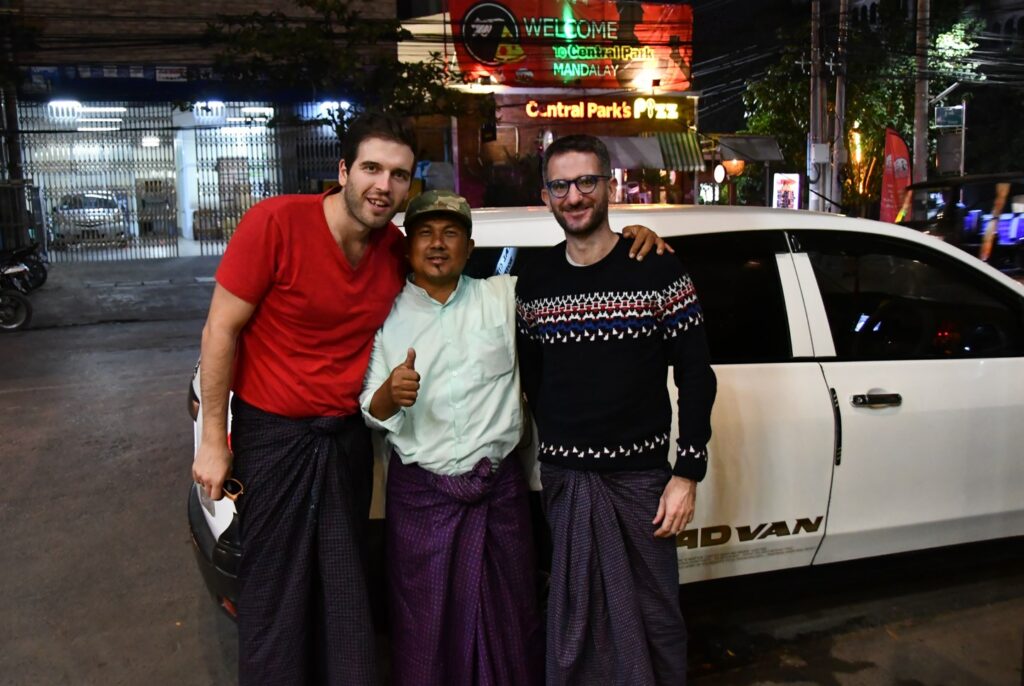
It doesn’t mean you should give up the experience of renting a two-wheeler, but rather that you should be well-prepared, flexible, and ready to face these challenges with a smile. It’s better to be an experienced rider, aware of the road conditions and local driving habits, and maintain a positive attitude. In case of mechanical issues or minor accidents, patience and composure will be essential. Travel blogs may offer a similar perspective on the matter, and we find it important to highlight the risks associated with riding a two-wheeler in Southeast Asia.
And never forget to have robust travel insurance. It’s essential for any trip, but even more so when renting a vehicle. Accidents can happen, and it’s crucial to be well-covered, especially in regions where medical care can be expensive. Check the details of your insurance to ensure it covers accidents related to riding a two-wheeler.
And if you don’t feel 100% comfortable with all of this, don’t worry: the sites in Indonesia, Vietnam, Myanmar, or the Philippines are just as incredible when discovered by shared or private taxi. The key is to know your limits and travel understanding your abilities, fears, and means.
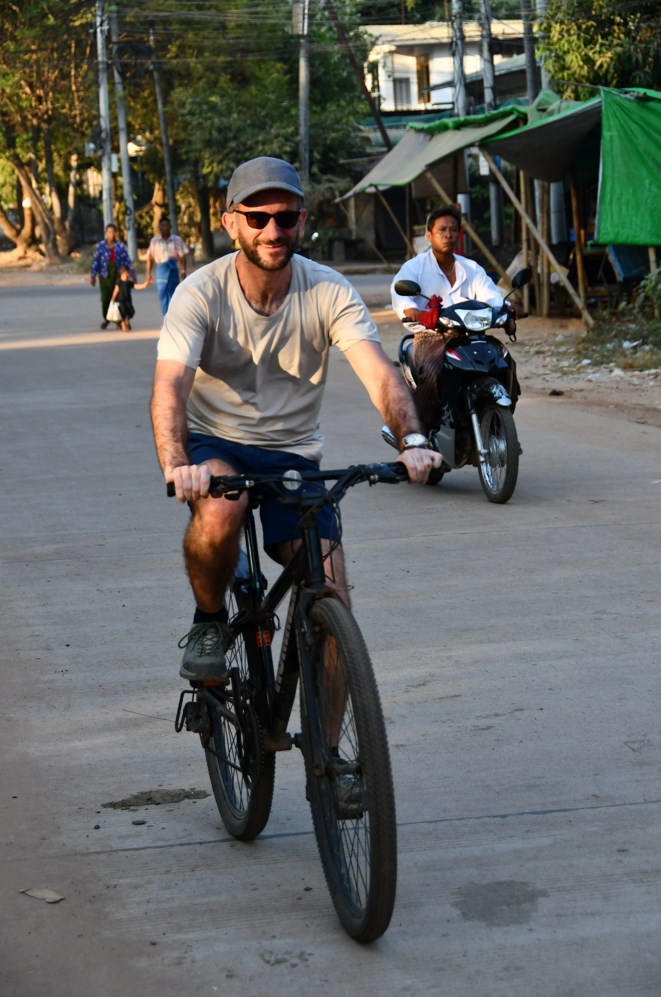
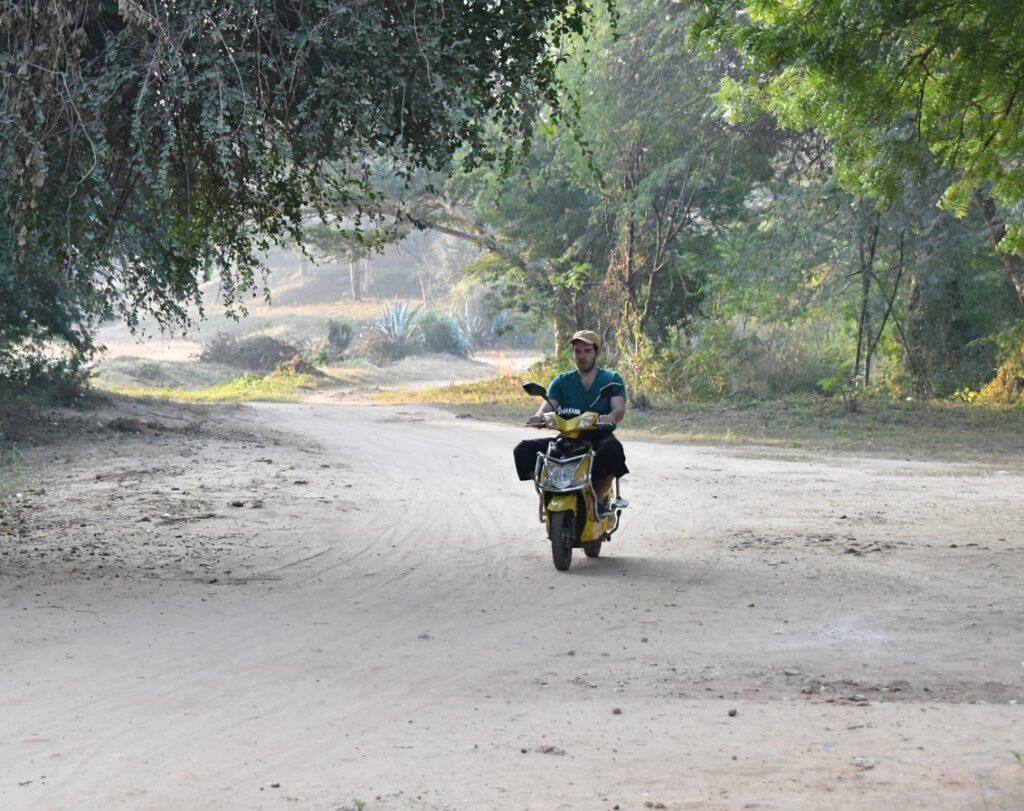
As for us, we won’t be fooled again: scooters in Southeast Asia are a thing of the past for us! Our misadventure in Bagan, Myanmar, has definitively turned us away from this mode of transportation. Instead of two-wheelers, we will now settle for renting bicycles! We might look less cool on our bikes, but the important thing is to return from the journey without injuries…
Our misadventure in Myanmar, as told by François:
We had rented a hotel for a few days not far from the temples of Bagan and planned to do as everyone else, exploring the site on two wheels. I had never ridden one, but I thought if a teenager can ride one, it can’t be that difficult. So, on the morning of the big day, there I was confidently booking the two-wheeler for the day. I should clarify that what they call an electric scooter in Bagan is a kind of mini-scooter not very sturdy. Probably the most accident-prone model of motorized two-wheelers.
I straddle the thing, turn the ignition… and barely manage to go five meters before finding myself on the ground in front of a astonished husband. What no one told me is that a two-wheeler is not like a bicycle, let alone a car… A two-wheeler is not super maneuverable; the slightest movement of the handlebars sends you straight into a mishap. As I had just learned the hard way.
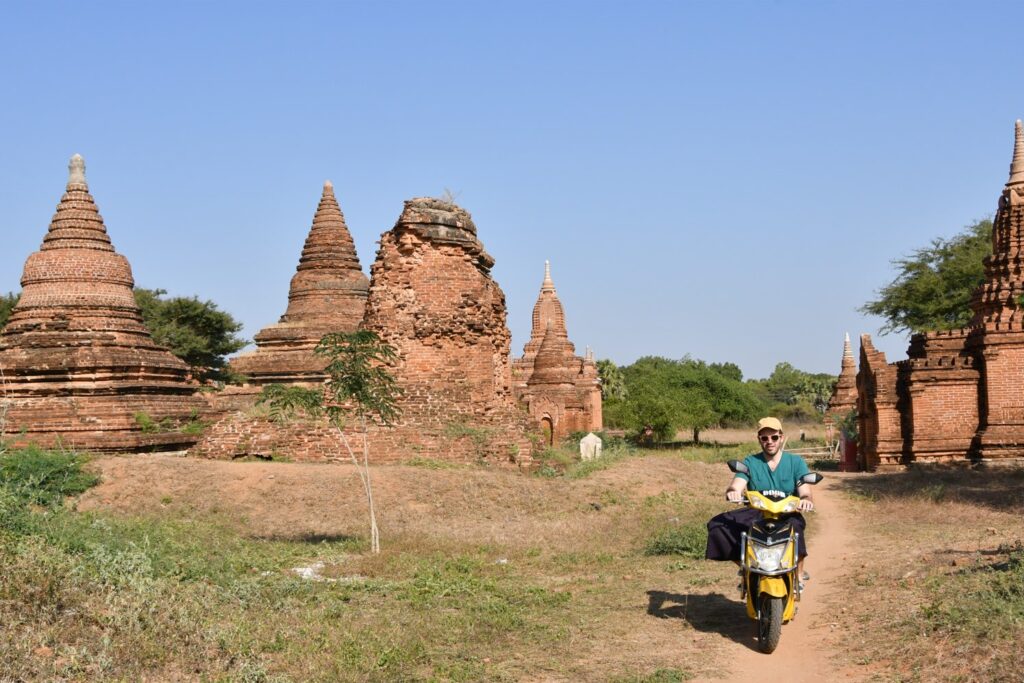
Still a bit proud, I get back on the thing and decide this time to go faster, thinking it’s probably more stable when it’s moving. Yes… and no. A two-wheeler is also sensitive: it’s crazy how a very slight twist of the wrist suddenly makes it leap forward and accelerate at full speed!
So, a speedster passed in front of Benjamin, driven by a guy not at all reassured and in a major existential crisis: if I slow down, I fall and crash, if I don’t slow down, I don’t fall, but I crash violently. Life is full of such dilemmas sometimes… Despite it all, I manage to stop the beast without any pain, but swelled with pride.
Once we planned to visit Bagan on two wheels, we were determined to do so. So, I spent about twenty minutes making back-and-forths on a straight road to be somewhat capable of controlling the two-wheeler. Feeling quite confident, I stop next to Benjamin for him to climb on the back, not at all confident himself.
Bagan is ours… not quite yet. The road is not straightforward (obviously, that would have been too easy). The turns are challenging, Benjamin is panicked, and I just want to cry. Looking back, I even have a mental image of the two-wheeler in a ditch, me retrieving it from the thorns, and eventually walking beside it, feeling disgusted.
Nevertheless, we somehow manage to visit all the temples planned for that day. These visits almost made me forget all the anxiety we had in the morning with the two-wheeler, and it’s with confidence that I get back behind the handlebars. My confidence quickly diminishes.
If you think the way there was challenging, wait until you see the return journey (we had to get back to the hotel…). First brilliant idea: return in the late afternoon, at the same time as all the tourists and locals. Second brilliant idea: ride in the middle lane with vehicles honking from both sides and hands completely paralyzed by fear gripping the handlebars. Third brilliant idea: head straight for a cart driving next to us. Yes, straight towards it.
The fireworks of negative emotions that were already flooding me took control of the monster we were sitting on and directed us straight towards the left rear wheel of the cart. Reactions were varied and immediate. The cart passengers waving their arms in all directions, uttering words I couldn’t even hear. Benjamin screaming in my ear (him, I heard) while visualizing the crash and lifting his leg as high as possible. And me, mindlessly continuing on the road, completely hypnotized.
A moment of lucidity suddenly made me turn the handlebars a few microseconds before Benjamin’s right leg met the left rear wheel of the cart. I don’t remember how I managed to bring us unharmed to the side of the road afterward.
After venting our negative emotions in the form of insults or tears (you decide who reacted how), we chose to walk back instead of getting back on that devilish machine. To ensure we kept all our limbs intact, we decided to explore the rest of the site by alternating between walking and taking tuk-tuks.
While returning the two-wheeler to the rental agency, I told myself that I would never get on a two-wheeler again…
Find all our others articles on Myanmar:



